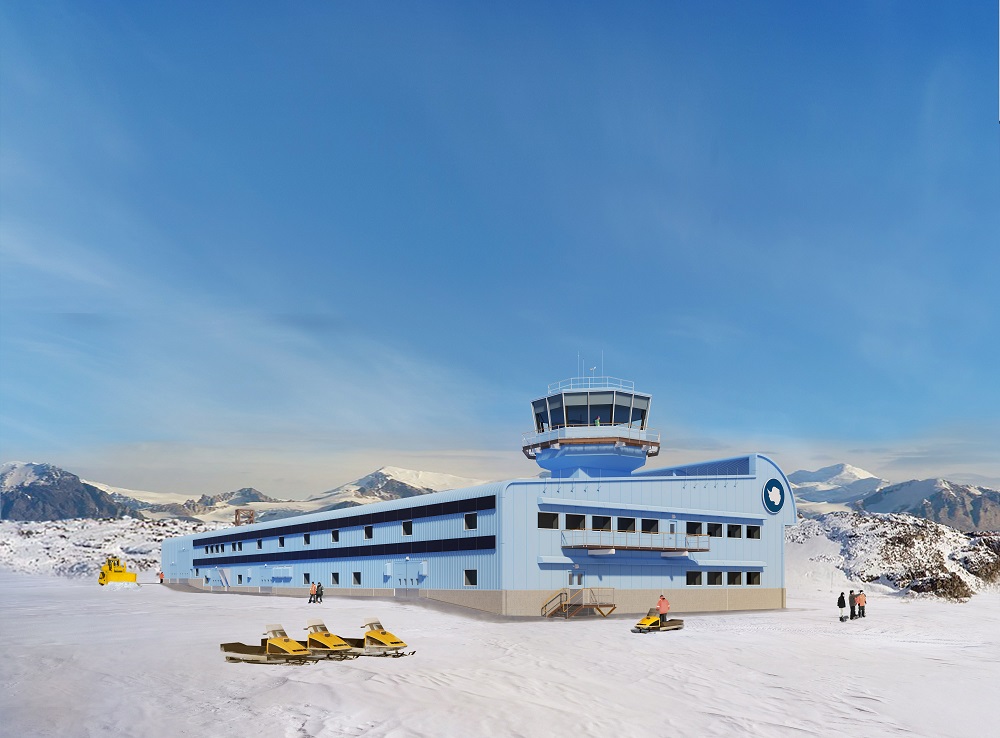And finally… BAM Nuttall and Sweco sign ten-year partnership to upgrade British research Antarctic stations
BAM Nuttall and design consultants Sweco have won a tender for a new ten-year partnership to take forward an ambitious programme to modernise the British Antarctic Survey (BAS) research stations.

A visualisation of the Discovery Building © HBA-BAS
Commissioned by UK Research and Innovation (UKRI), this new partnership provides the framework to deliver a wide range of sustainable construction projects.
Over the next decade, projects could include new scientific support buildings, laboratories, accommodation, upgraded recycling and waste management facilities, and runway enhancements. The partnership will also explore renewable energy options and decarbonisation.
Professor Dame Jane Francis, director of British Antarctic Survey, said: “Building on the successful delivery of new wharves to support the RRS Sir David Attenborough, and existing project to deliver a new science operations facility at Rothera Research Station, our ambition is to continue to replace aging buildings with modern, highly insulated and energy-efficient infrastructure. It is our world-leading research that underlines the urgency to cut the emission of greenhouse gases and we are rising to the challenge. We will move away from our reliance on carbon fossil fuels to sustain our Antarctic buildings, and aim to scale-up our use of renewable energy sources.”
A blueprint or ‘masterplan’ to rationalise our Antarctic infrastructure and significantly reduce our carbon emissions will shortly be completed with technical advisors Ramboll. This new partnership with BAM and Sweco brings together innovation, design and technical capability that will enable us to meet our goal of achieving Net Zero by 2040 if not before.”
Adrian Savory, chief executive of BAM Nuttall, said: “We’re delighted BAM Nuttall has been awarded the opportunity to continue collaborating on this world-leading modernisation programme. The partnership with clients UKRI-NERC, and construction partners, BAM, Sweco, Ramboll, and a range of innovative suppliers, is an exciting one.
“We’re looking forward to combining our expertise, and using the strength of our shared values, to deliver outstanding solutions. We will continue to maximise digital technologies and modularisation to support safe, predictable and sustainable outcomes, achieving BAS’s goal to decarbonise research operations in Antarctica.”
The JCR berthed at the new wharf at Rothera
Max Joy, president of Sweco UK, said: “We’re exceptionally proud to be continuing our work in Antarctica and applying our expertise in cold climate construction to support this critical project. The progress highlights the strength of our partnership and our combined skillsets have enabled the creation of a true polar centre of excellence.
“The team has championed sustainable practices at every stage of the project and introduced world-class, energy efficiency solutions across the polar research facilities at Rothera. We will continue to push the boundaries of engineering, construction and design through the next stage, which we hope will inspire the next generation of engineers.”
This is the second successful bid involving BAM and Sweco for a partnership contract with UKRI organisations NERC and BAS within Antarctica. The Antarctic Infrastructure Modernisation Programme (AIMP) includes construction lead BAM, their designers Sweco and technical advisors Ramboll; it began in 2017 with the construction of a new jetty and buildings at Bird Island. Successes for the programme also include two new wharves at King Edward Point in South Georgia and at Rothera to berth the RRS Sir David Attenborough. Groundworks for a new scientific support facility at Rothera were recently completed this month.
Construction in Antarctica is extremely challenging, all materials need to be shipped from the UK and the planning process needs to be meticulously planned to account for every nut and bolt as the nearest builders’ merchant is thousands of miles away.















